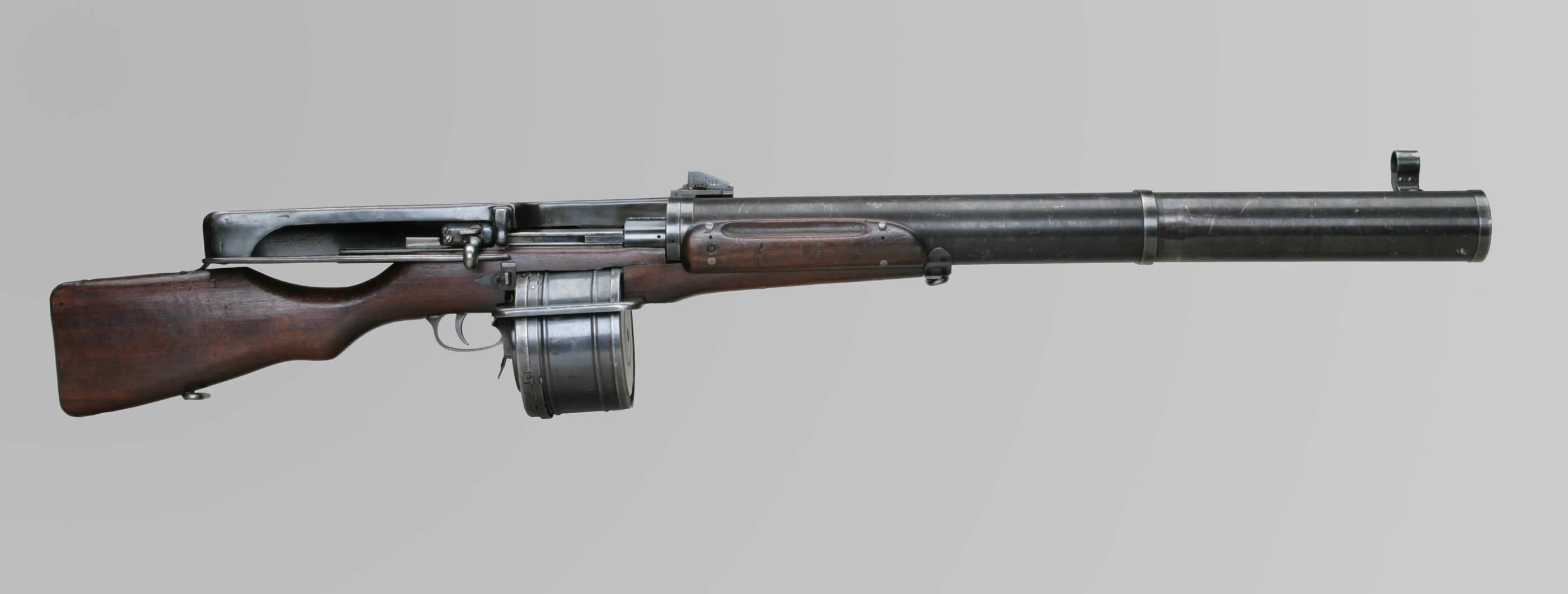
The Adams-Willmott was produced by BSA in the early 1930s and marketed as an aircraft observer’s gun. It was entered into Royal Air Force trials to replace the Lewis gun in 1934, but was disqualified early after the firing pin broke and could not be repaired. It also suffered numerous stoppages. The gun found no customers and was never put into full production.

This was a modified Lewis gun developed by the now-forgotten British manufacturer Soley Armaments. These Lewis gun prototypes, feeding from Bren magazines, were tested by the British Expeditionary Force in France in 1940. The BEF was desperately looking for an emergency stand-in for a submachine gun, of which they had none. The other guns tested were the Thompson, Hyde, Suomi, S1-100, and the RSC, Johnson, and ZH-29 rifles converted to full-auto. The Thompson was ultimately selected.
 .
. 
Lewis Mark I.

Colt Model 1925 Browning Automatic Rifle (Royal Armouries )

Specially adapted British 1925 Trials BAR (Royal Armouries )
British BAR. 
The McCrudden light machine rifle was invented by ex-Australian serviceman John Charles Raginald McCrudden (known as Reg) following his discharge from the AIF in 1917. It is believed there are only two surviving examples of this interesting weapon, one being held in the Pattern Room in Leeds, England. The other McCrudden Light Machine Rifle Mk1 is on extended loan to the Power House Museum exhibition in Sydney, Australia.[2][3]
McCrudden’s first hand-built prototype was believed to have been manufactured at an engineering workshop in Randwick, Sydney. McCrudden and his guns traveled from Sydney to Jervis Bay for an audience with Commodore J S Dumaresq and Lt Cmdr Burgh. He was received favorably and recommendations were made that he should take the gun to England for assessment by the British War Office, Dumaresq forwarding a favorable report in light of the Navy’s pending trials to select a weapon to replace the Lewis Gun. Following Dumaresq’s advice McCrudden took his designs to England where he had additional weapons made by Kingsway Manufacturing Company Ltd in London. 
Class L
The Vickers-Berthier was the contribution that Vickers made to the search for a light machine gun. It began development when Vickers Limited purchased the design of the French Berthier in the early 1920s. The search for something that was air-cooled and with a quick-change barrel was the competition that the Bren LMG eventually won, in replacing the Lewis in British Service. This followed a series of evaluation trials in 1934.
Despite the British Army, deciding to use the Bren as its Light Machine Gun, the Indian Army chose to adopt the Vickers-Berthier. This succesful adoption actually resulted in the Mk. III being produced in India at the Ishapore Factory.  . Vickers MG's with - PG's
. Vickers MG's with - PG's

 Huot-Ross
Huot-Ross .jpg)